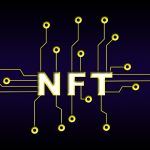The Future of NFTs: Physical NFTs and Enhanced Verification
Non-fungible tokens (NFTs) have taken the art world by storm, with digital artwork selling for millions of dollars. However, there is a growing interest in physical NFTs that exist in the real world. Additionally, with concerns about the authenticity of NFTs, improved verification methods are being developed to ensure the validity of these digital assets.
The Emergence of Physical NFTs
While digital NFTs have gained immense popularity, some collectors are now turning to physical NFTs. These are physical objects that have a unique NFT associated with them. For example, an artist could create a one-of-a-kind sculpture and attach an NFT to it, ensuring that it is the only version of that artwork that exists. The ownership of the physical object can then be tracked through the NFT, just like a digital asset.
What are physical NFTs?
Physical NFTs have several advantages over their digital counterparts. For one, they are tangible and can be displayed in a gallery or home. Additionally, they have the potential to be more secure as they are not subject to the same risks as digital assets. However, there are also challenges associated with physical NFTs, such as ensuring that the physical object is authentic and that the associated NFT cannot be tampered with.
You can learn more about physical nfts at Authena.io
Enhanced Verification for NFTs
One of the challenges facing NFTs is ensuring their authenticity. While NFTs are designed to be unique, there have been instances of fraud where fake NFTs have been created and sold. To address this issue, enhanced verification methods are being developed.
One method being explored is the use of blockchain technology to verify NFTs. Blockchain is a decentralized ledger that records all transactions and is considered highly secure. By using blockchain, the ownership of an NFT can be tracked and verified, ensuring that it is a genuine asset.
Another method being explored is the use of enhanced metadata. Metadata is information attached to the NFT that describes its characteristics, such as its origin, artist, and edition number. By enhancing the metadata, it can become more difficult to create fake NFTs as the additional information can be cross-referenced with the original source to ensure its validity.
As NFTs continue to gain popularity, the emergence of physical NFTs and enhanced verification methods will likely become more prevalent. While there are challenges associated with physical NFTs and verifying the authenticity of NFTs, these developments have the potential to make NFTs more secure and valuable. As the market for NFTs continues to evolve, it will be interesting to see how these innovations shape the future of this digital asset class.

 Previous Post
Previous Post